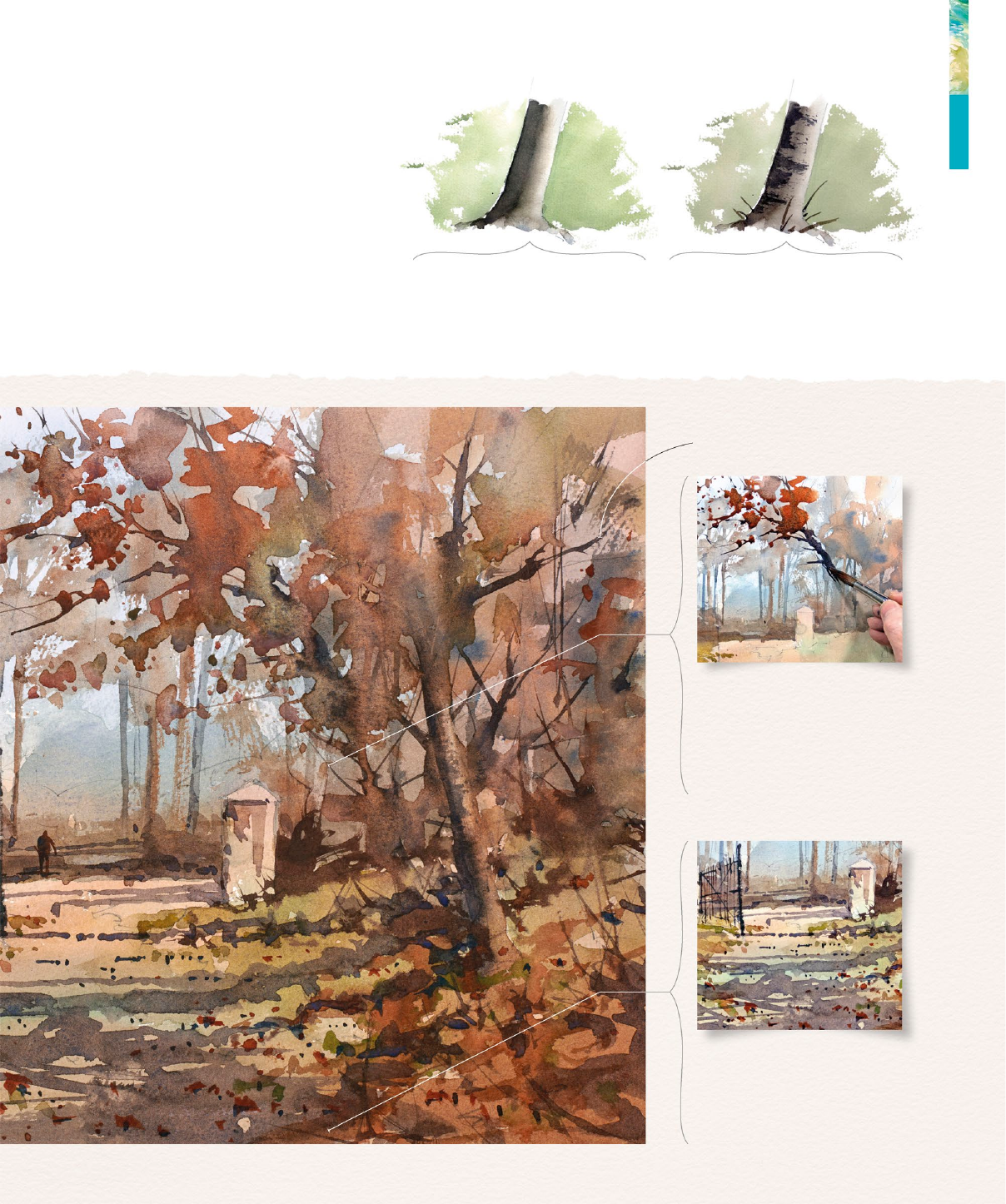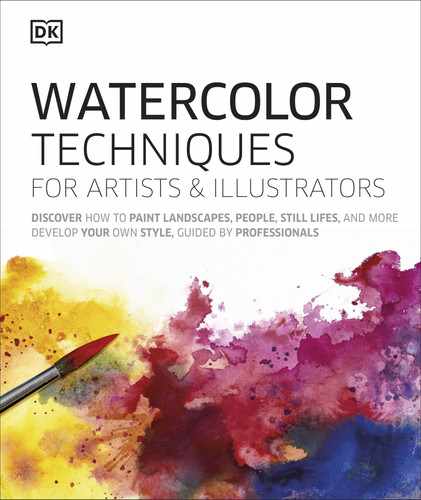
172 Landscapes and townscapes | SUBJECTS
PUTTING IT INTO PRACTICE
A feeling of dense woodland is
captured here through the effects
of aerial perspective; soft washes
map out the distant trees, with
warmer mixes and varied strokes
used to dene the trees that
advance in the foreground.
Woodlands
SHAPING MASSES OF TREES AND FOLIAGE
Trees are an almost universal component of a landscape. To create a feeling
of depth, trees must be painted in different ways to capture both the essential
simplicity of a distant mass of woodland, along with the innite variety of
color, tone, and shape seen in the foreground. To maintain a sense of a
group of trees, ensure that each element blends naturally with the next.
Woodland walk
No. 14 and no. 6 soft-hair
round brushes
1
⁄4 in (6 mm) swordliner brush
10 x 14 in (25 x 35 cm) cold press
140 lb (300 gsm) watercolor paper
You will need
1
Distant mass
Apply a simple rst wash of blue
sky followed by warm mixes for the
local color in the foreground. Add a
at wash of French ultramarine and
burnt sienna to give the impression
of the distant trees, using the side of
the brush to suggest the broken edge
of the leaf canopies. Leave to dry.
2
Tree groups
Use the point of a no. 14 brush to
paint the middle distance trees. Add
detail to the branches and trunks
using varied mixes of the same wash
to connect them. Aim for a group, not
separate trees, and allow to dry.
Phthalo blue
(green shade)
Cadmium red
Cadmium
yellow
French
ultramarine
Burnt sienna
US_172-173_Trees_1.indd 172 02/04/2020 3:34pm

173 Woodlands
Three-dimensional shapes
Foreground detail gives depth to any
painting and is especially important in
landscapes, helping differentiate the
woods from the trees. While distant tree
trunks can be rendered with tonal lines,
those in the foreground should be more
complex, with the suggestion of solidity
and a rounded form. Simplify the shape
into light and dark tones, adding texture
for bark with dry brushstrokes.
3
Foliage shapes
In the foreground, use stronger
mixes and varied shapes to suggest
the leaf cover and twigs, working
wet-in-wet; complete sections of
a tree before moving on. Blend the
base of the trees with the ground.
4
Foreground detail
Use a strong mix of burnt sienna
and French ultramarine for the dark
shadows that connect the trees.
Hint at leaves on the forest oor
with dots and dashes of splatter.
Connect the shapes of the
masses of leaves together
with softly blending twigs
Light and shade
The main trunk of a tree is essentially
a cylinder. Use a soft blend between the
light and dark side of the trunk to give
a three-dimensional effect.
Bark texture
When the wash is dry, apply linear
marks using dry brush (see pp.56–57)
and a rigger or swordliner, to create a
convincing suggestion of bark texture.
US_172-173_Trees_1.indd 173 02/04/2020 3:34pm
..................Content has been hidden....................
You can't read the all page of ebook, please click here login for view all page.
